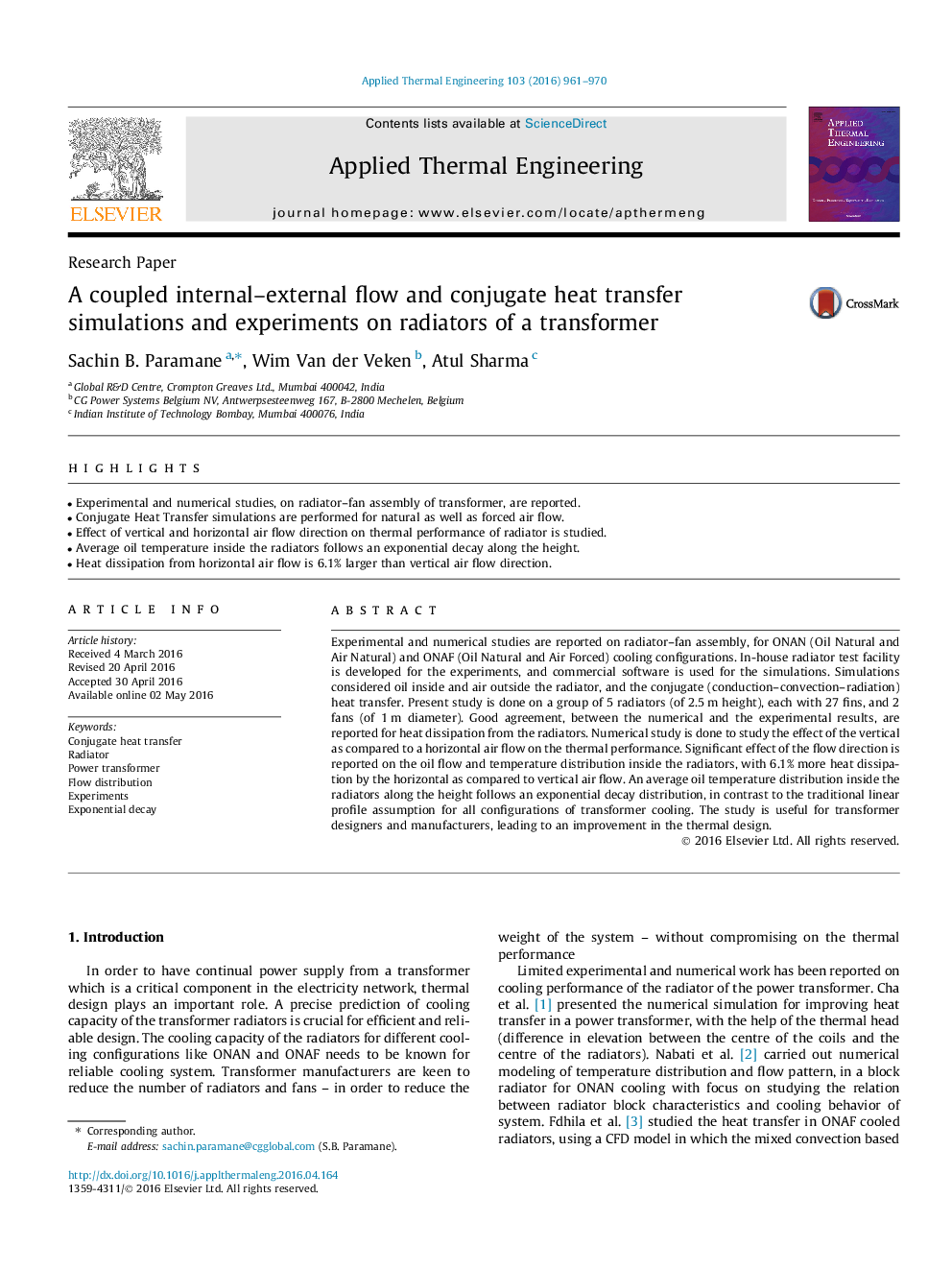| Article ID | Journal | Published Year | Pages | File Type |
|---|---|---|---|---|
| 7047917 | Applied Thermal Engineering | 2016 | 10 Pages |
Abstract
Experimental and numerical studies are reported on radiator-fan assembly, for ONAN (Oil Natural and Air Natural) and ONAF (Oil Natural and Air Forced) cooling configurations. In-house radiator test facility is developed for the experiments, and commercial software is used for the simulations. Simulations considered oil inside and air outside the radiator, and the conjugate (conduction-convection-radiation) heat transfer. Present study is done on a group of 5 radiators (of 2.5Â m height), each with 27 fins, and 2 fans (of 1Â m diameter). Good agreement, between the numerical and the experimental results, are reported for heat dissipation from the radiators. Numerical study is done to study the effect of the vertical as compared to a horizontal air flow on the thermal performance. Significant effect of the flow direction is reported on the oil flow and temperature distribution inside the radiators, with 6.1% more heat dissipation by the horizontal as compared to vertical air flow. An average oil temperature distribution inside the radiators along the height follows an exponential decay distribution, in contrast to the traditional linear profile assumption for all configurations of transformer cooling. The study is useful for transformer designers and manufacturers, leading to an improvement in the thermal design.
Keywords
Related Topics
Physical Sciences and Engineering
Chemical Engineering
Fluid Flow and Transfer Processes
Authors
Sachin B. Paramane, Wim Van der Veken, Atul Sharma,
